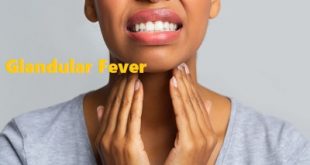Definition
Folliculitis barbae is the medical term for a common condition called barber’s itch; this condition is an infectious skin disease which arises on the bearded facial areas of people who are unlucky enough to contract the disease. The disease develops and the first signs of the condition are the appearance of painful pimples that develop at the hair follicles along the beard, these pimples can grow either superficial or may occur in the deeper layers of the skin. The hair may come off easily in more severe cases, because larger knots can form all over the affected area and this will leave scars-thus the disease can become quite noticeable. Either a bacterial or a fungal infection may be responsible for the onset of the disease.
Barber’s itch
Epidemiology
About 10-80% of adult black men have folliculitis barbae, particularly those who shave closely on a regular basis. It is a significant problem in black men in the military where regulations require a clean-shaven face.
Types of Barber’s Itch
Types of superficial folliculitis
Staphylococcal folliculitis
This common type is marked by itchy, white, pus-filled bumps that can occur anywhere on your body where hair follicles are present. When it affects a man’s beard area, it’s called barber’s itch. It occurs when hair follicles become infected with Staphylococcus aureus (staph) bacteria. Although staph bacteria live on your skin all the time, they generally cause problems only when they enter your body through a cut or other wound. This can occur through shaving, scratching or with an injury to the skin.
Pseudomonas folliculitis (hot tub folliculitis)
The pseudomonas bacteria that cause this form of folliculitis thrive in a wide range of environments, including hot tubs in which the chlorine and pH levels aren’t well regulated. Within eight hours to five days of exposure to the bacteria, a rash of red, round, itchy bumps will appear that later may develop into small pus-filled blisters (pustules). The rash is likely to be worse in areas where your swimsuit holds contaminated water against your skin.
Pseudofolliculitis barbae
An inflammation of the hair follicles in the beard area, pseudofolliculitis barbae affects men when shaved hairs curve back into the skin. This leads to inflammation and, sometimes, to dark raised scars (keloid scars) on the face and neck.
Pityrosporum folliculitis. Especially common in teens and adult men, pityrosporum folliculitis is caused by a yeast and produces chronic, red, itchy pustules on the back and chest and sometimes on the neck, shoulders, upper arms and face.
Types of deep folliculitis
Sycosis barbae
This occurs in men who have begun shaving and involves inflammation along the whole hair follicle. Small pustules appear at first on the upper lip, chin and jaw, then become more prevalent as shaving continues. Severe sycosis barbae may cause scarring.Gram-negative folliculitis. This sometimes develops if you’re receiving long-term antibiotic treatment for acne. Antibiotics alter the normal balance of bacteria in the nose, leading to an overgrowth of harmful organisms (gram-negative bacteria). In most people, this doesn’t cause problems, and the flora in the nose returns to normal once antibiotics are stopped. In a few people, however, gram-negative bacteria spread and cause new, sometimes-severe acne lesions.
Boils and carbuncles
These occur when hair follicles become deeply infected with staph bacteria. A boil usually appears suddenly as a painful pink or red bump. The surrounding skin also may be red and swollen. The bump then fills with pus and grows larger and more painful before it finally ruptures and drains. Small boils usually heal without scarring, but a large boil may leave a scar. A carbuncle is a cluster of boils that often occurs on the back of the neck, shoulders, back or thighs. Carbuncles cause a deeper and more severe infection than does a single boil. As a result, they develop and heal more slowly and are likely to leave scars.
Eosinophilic folliculitis
Seen primarily in those with HIV, this type of folliculitis is characterized by recurring patches of inflamed, pus-filled sores, primarily on the face and sometimes on the back or upper arms. The sores usually spread, may itch intensely and often leave areas of darker than normal skin (hyperpigmentation) when they heal. The exact cause of eosinophilic folliculitis isn’t known, although it may involve the same yeast-like fungus responsible for pityrosporum folliculitis.
Risk factors of Barber’s Itch
Anyone can develop folliculitis, but certain factors make you more susceptible to the condition. These include:
- Medical conditions that reduce your resistance to infection, such as diabetes, chronic leukaemia, organ transplantation and HIV/AIDS
- A pre-existing skin condition, such as acne or dermatitis
- Trauma to your skin from injury or surgery
- Long-term antibiotic therapy for acne
- Topical corticosteroid therapy
- Obesity- folliculitis is more common in people who are overweight
- Long-term exposure to clothing items that can trap heat, such as wearing high boots or waders
- Exposure to hot water, such as a hot tub or a heated swimming pool
Causes
Folliculitis is caused by an infection of the hair follicles by bacteria, viruses or fungi. The most common cause of folliculitis is Staphylococcus aureus bacteria.
Follicles are densest on your scalp, but they occur everywhere on your body except your palms, soles and mucous membranes, such as your lips. If follicles become damaged, they become susceptible to invasion.
The most common causes of follicle damage include:
- Friction from shaving or tight clothing
- Excessive perspiration
- Inflammatory skin conditions, including dermatitis and acne
- Injuries to your skin, such as abrasions or surgical wounds
- Coverings on your skin, such as plastic dressings or adhesive tape
Symptoms of Barber’s Itch
The symptoms of barber’s itch can be very unpleasant to experience, often making us feel uncomfortable and very self-conscious.
It is important that if your symptoms worsen or you notice other signs such as a fever, you speak to your doctor as soon as possible to avoid complications such as cellulitis or in the worst case scenario, septicaemia.
Hair loss: Fungal spores feed on keratin, a compound integral to the structure of hair follicles. This can often weaken hair and sometimes even cause it to fall out. You may notice bald patches appearing on your beard, but after treatment, any lost hair should grow back
Ringworm rashes: Barber’s itch is also known as beard ringworm, characterised by the red circular rashes that can sometimes break out across the skin of sufferers. These do not always occur with barber’s itch, but it is quite common for them to appear, usually on the cheeks, or neck of the patient
Itching: Itching is almost an automatic reaction that we have when our skin is irritated or dry. However, scratching away at infected skin may only serve to aggravate your symptoms further, and can actually aid the spreading of the infection
Dry, flaky skin: Barber’s itch can make our skin drier and cracked, allowing for bacteria to permeate the skin membranes and trigger further adverse reactions.
Inflammation: Inflammation occurs in our skin when our immune system attempts to fight back against invading pathogens and heal any irritation or wounds
Blistering: In barber’s itch, large blisters often appear that sometime contain pus. These should not be scratched or touched, however if they start to bleed you should consult your GP as soon as possible
Discolouration of skin: Fungal spores can affect the pigmentation of our skin, making it appear paler in certain areas, such as around the outside and inside of a ringworm rash. This discolouration is classified as tinea versicolour, and it is normally clears once the fungal infection has been successfully treated
Stress: Stress is a common experience in many instances of skin infections, however you should try to find ways of lowering your stress levels as anxiety and emotional distress can often exaggerate your physical symptoms.
Complications of Barber’s itch (Folliculitis)
Mild cases of folliculitis aren’t likely to cause complications. If complications do occur with mild infections, they may include:
- Recurrent or spreading infection
- Large, itchy patches of staph infection on the skin (plaques)
Severe folliculitis may include:
Furunculosis: This condition occurs when a number of boils develop under your skin. Boils usually start as small red bumps but become larger and more painful as they fill with pus.
Scarring: Severe folliculitis may leave thick, raised scars (hypertrophic or keloid scars) or patches of skin that are darker than normal.
Destruction of the hair follicle: This leads to permanent hair loss.
Diagnosis and test
Your doctor is likely to diagnose folliculitis simply by looking at your skin. When standard treatments fail to clear the infection, your doctor may send a sample taken from one of your pustules to a laboratory, where it’s grown on a special medium (cultured) and then checked for the presence of bacteria. When doctors suspect eosinophilic folliculitis, they may remove a small tissue sample (biopsy) from an active lesion for testing.
Treatment and medications
The treatments you receive for folliculitis depend on the type and severity of your condition, what self-care measures you’ve already tried and your preferences for treatment. Even if treatment helps, the infection may come back.
Medications
Creams or pills to control infection: For mild infections, your doctor may recommend the antibiotic cream mupirocin (Bactroban). Oral antibiotics aren’t routinely used for folliculitis. But for a severe or recurrent infection, your doctor may prescribe them.
Creams, shampoos or pills to fight fungal infections: Antifungals are for infections caused by yeast rather than bacteria, such as pityrosporum folliculitis. Antibiotics aren’t helpful in treating this type.
Creams or pills to reduce inflammation: If you have mild eosinophilic folliculitis, your doctor may suggest you try a steroid cream. If your condition is severe, he or she may prescribe oral corticosteroids. Such drugs can have serious side effects and should be used for as brief a time as possible.
If you have HIV/AIDS, you may see improvement in your eosinophilic folliculitis symptoms after antiretroviral therapy.
Other interventions
Minor surgery: If you have a large boil or a carbuncle, your doctor may make a small incision in it to drain the pus. This may relieve pain, speed recovery and help lessen scarring. Your doctor may then cover the area with sterile gauze in case pus continues to drain.
Light therapy with a medicated cream: Also called photodynamic therapy, this technique has helped people with folliculitis that did not clear up with other treatments. In a study of seven people who each had one treatment of photodynamic therapy, six people showed significant improvement four weeks later. In another study of one man, the technique completely cleared his folliculitis. And he remained free of symptoms 15 months after the last treatment.
Laser hair removal: If other treatments fail, laser therapy may clear up the infection. This method is expensive and may require several treatments. It permanently reduces the density of the hair in the treated area. Other possible side effects include discolored skin, scarring and blistering.
Prevention of Barber’s Itch
Simple natural techniques can be implemented as a substitute for medicines to prevent Pseudo folliculitis barbae condition.
- Using mild antibacterial bath soap for shower. Taking bath at regular intervals after vigorous activities with hot or warm water to prevent the clogging of pores and cleaning the dust from skin.
- Keep away from dispensing used face towels or personal products such as soaps, bath towels etc.
- Always use clean freshly laundered towels.
- Suppress itching by applying itch relief lotions or creams instead of scratching it.
- Avoid clean shave. Change razor blades each time shaving is done. Electronic razors are recommended in these conditions.
- Oils and creams clog pores and pin down more bacteria. Keep away from using oils or moisturizers while infection persists.
 Diseases Treatments Dictionary This is complete solution to read all diseases treatments Which covers Prevention, Causes, Symptoms, Medical Terms, Drugs, Prescription, Natural Remedies with cures and Treatments. Most of the common diseases were listed in names, split with categories.
Diseases Treatments Dictionary This is complete solution to read all diseases treatments Which covers Prevention, Causes, Symptoms, Medical Terms, Drugs, Prescription, Natural Remedies with cures and Treatments. Most of the common diseases were listed in names, split with categories.








thank you so much for this article. It’s exactly what I’m suffering from. after reading this infelt automatically relieved. I’ll consult a dermatologist ASAP. thanks
LARGE BOIL, PAINFUL WITH HIGH FEVER : WHAT IS EXACT ANTIBIOTICS AND PAIN RELIEF?. +254724725950.
Please consult a doctor.
I had a serious bump on my head that occurred twice in, eight years but all antibiotics had no good result lastly only prednisolone tabs hovid eradicated it completely what can I use again to prevent it’s reoccurring in the near future thanks from yola Nigeria
Please consult a doctor.
Thanks
Grateful
Ad small boils at my neck but nothiet consulted any doctor.which medication
Please consult a doctor to get rid of the problem.
please any time a barber,my jaw and my face will become full of small poxs like pimples so how can I control that please?
Please hire a prescription from dermatology.
my beard inner skin is fully yellow pimples and head also can you help mee
Get yourself a mild facial cleanser to keep your skin and beard clean.
Exfoliate as your beard begins to grow to avoid ingrown hairs.
Don’t forget to moisturize (dry skin clogs pores, causing more pimples).